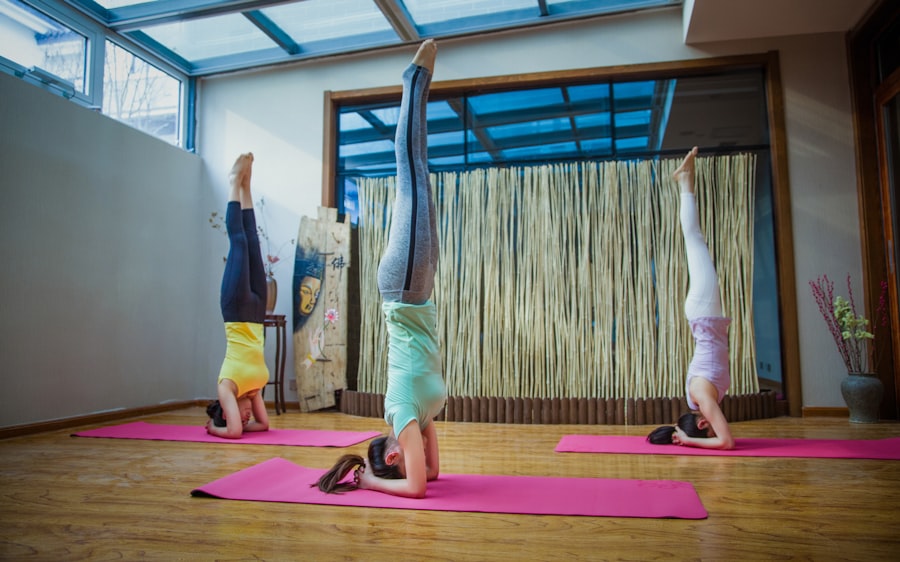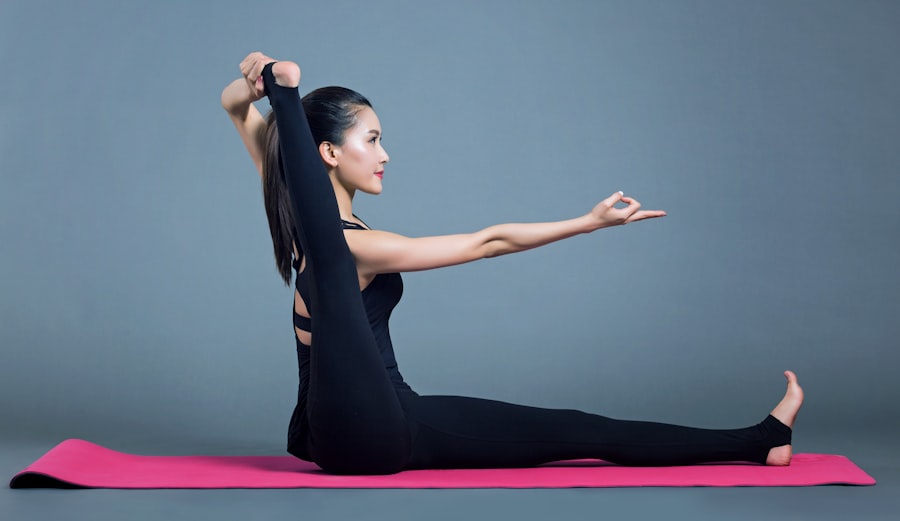Establishing realistic goals is a fundamental step in any fitness journey. It is essential to recognize that fitness is not a one-size-fits-all endeavor; individual circumstances, including current fitness levels, lifestyle, and personal aspirations, play a significant role in shaping what is achievable. For instance, someone who has been sedentary for years may set a goal to walk for 30 minutes daily, while an experienced athlete might aim to improve their marathon time.
The key is to ensure that these goals are specific, measurable, attainable, relevant, and time-bound (SMART). By doing so, individuals can create a clear roadmap that guides their efforts and keeps them motivated. Moreover, setting short-term and long-term goals can provide a sense of accomplishment and direction.
Short-term goals, such as completing a certain number of workouts per week or increasing the duration of a cardio session, can serve as stepping stones toward larger objectives like losing a specific amount of weight or completing a fitness challenge. Celebrating these small victories not only boosts morale but also reinforces the habit of regular exercise. It is crucial to periodically reassess these goals to ensure they remain aligned with one’s evolving fitness journey and lifestyle changes.
Key Takeaways
- Setting realistic goals is important for long-term success in fitness and exercise.
- Choosing the right exercise program that aligns with your goals and preferences is crucial for consistency.
- Understanding basic exercise techniques ensures proper form and reduces the risk of injury.
- Incorporating cardiovascular workouts is essential for improving heart health and endurance.
- Adding strength training to your routine helps build muscle, increase metabolism, and prevent injury.
Choosing the Right Exercise Program
Choosing the Right Program for Your Goals
For instance, someone looking to lose weight might opt for programs that emphasize calorie-burning activities like circuit training or running, while those seeking to enhance flexibility may find yoga or Pilates more suitable.
Personalization and Support
Understanding personal interests can significantly increase adherence to the program, making it more likely that individuals will stick with their chosen routine over the long term. Additionally, it is essential to consider the level of guidance and support available within a program. Some individuals thrive in structured environments with professional trainers who can provide personalized feedback and motivation.
A Well-Rounded Program for Overall Fitness
Regardless of the chosen format, ensuring that the program includes a variety of exercises can help prevent boredom and promote overall fitness. A well-rounded program should incorporate cardiovascular training, strength training, and flexibility work to address all aspects of physical health.
Understanding Basic Exercise Techniques

A solid understanding of basic exercise techniques is crucial for maximizing effectiveness and minimizing the risk of injury. Proper form is essential in any workout; it not only enhances performance but also ensures that the targeted muscles are engaged correctly. For instance, when performing a squat, maintaining a straight back and ensuring that the knees do not extend beyond the toes are vital for preventing strain on the joints.
Learning these techniques can often be facilitated through instructional videos, personal training sessions, or group classes where experienced instructors can provide real-time feedback. Moreover, understanding the principles of progression and variation is key to long-term success in any exercise regimen. Progression involves gradually increasing the intensity or complexity of workouts to continue challenging the body and promoting adaptation.
This could mean adding more weight to strength exercises or increasing the duration of cardiovascular sessions. Variation, on the other hand, prevents plateaus by introducing new exercises or altering workout formats. For example, if someone has been running on a treadmill for several weeks, switching to outdoor running or incorporating interval sprints can reinvigorate their routine and stimulate further improvements.
Incorporating Cardiovascular Workouts
| Cardiovascular Workouts | Benefits |
|---|---|
| Running | Improves cardiovascular health, burns calories, and boosts mood |
| Cycling | Strengthens leg muscles, improves joint mobility, and reduces stress |
| Swimming | Works the entire body, increases endurance, and reduces the risk of chronic diseases |
| Jumping Rope | Improves coordination, burns a high number of calories, and enhances cardiovascular health |
Cardiovascular workouts are integral to any fitness program as they enhance heart health, improve endurance, and aid in weight management. Engaging in activities that elevate the heart rate—such as running, cycling, swimming, or dancing—can yield significant health benefits. The American Heart Association recommends at least 150 minutes of moderate-intensity aerobic activity or 75 minutes of vigorous-intensity activity each week for optimal cardiovascular health.
This can be broken down into manageable sessions throughout the week, making it easier for individuals to fit exercise into their busy schedules. Incorporating variety into cardiovascular workouts can keep them engaging and effective. For instance, alternating between steady-state cardio sessions—where one maintains a consistent pace—and interval training—where one alternates between high-intensity bursts and recovery periods—can enhance both aerobic capacity and calorie burn.
Additionally, exploring different environments can add an element of adventure; running on trails or cycling through scenic routes can make workouts feel less like a chore and more like an enjoyable experience. By diversifying cardiovascular activities, individuals can also target different muscle groups and reduce the risk of overuse injuries.
Adding Strength Training to Your Routine
Strength training is a critical component of a well-rounded fitness program that offers numerous benefits beyond muscle building. Engaging in resistance exercises not only increases muscle mass but also boosts metabolism, enhances bone density, and improves overall functional strength. Incorporating strength training into a routine can be achieved through various methods, including free weights, resistance bands, bodyweight exercises, or machines at the gym.
Each method has its advantages; for example, free weights allow for greater range of motion and functional movement patterns, while machines can provide stability for beginners. To maximize the benefits of strength training, it is essential to focus on compound movements that engage multiple muscle groups simultaneously. Exercises such as squats, deadlifts, bench presses, and pull-ups are excellent choices as they promote overall strength development and functional fitness.
Additionally, establishing a balanced routine that targets all major muscle groups—legs, back, chest, shoulders, arms—ensures comprehensive development and reduces the risk of imbalances that could lead to injury. Aiming for two to three strength training sessions per week can provide significant improvements in strength and body composition over time.
Implementing Flexibility and Mobility Exercises

Flexibility and mobility exercises are often overlooked but are vital for maintaining overall physical health and preventing injuries. Flexibility refers to the ability of muscles and tendons to stretch through their full range of motion, while mobility encompasses joint movement capabilities. Incorporating stretching routines into a fitness regimen can enhance performance by improving muscle elasticity and joint function.
Dynamic stretching before workouts prepares the body for activity by increasing blood flow and range of motion, while static stretching post-workout aids in recovery by promoting relaxation and reducing muscle tightness. Mobility exercises are particularly beneficial for enhancing joint health and functional movement patterns. Movements such as hip circles, shoulder dislocates with a resistance band, or thoracic spine rotations can improve joint function and reduce stiffness over time.
Yoga is another excellent way to enhance both flexibility and mobility while also promoting mindfulness and stress relief. By dedicating time to these aspects of fitness—ideally incorporating them into warm-ups or cooldowns—individuals can improve their overall performance in other areas of their workout routine.
Creating a Balanced Workout Schedule
Developing a balanced workout schedule is essential for ensuring comprehensive fitness progress while allowing adequate recovery time for the body. A well-structured plan typically includes a mix of cardiovascular training, strength training, flexibility work, and rest days to prevent burnout and overtraining. For instance, one might schedule strength training sessions on Mondays and Thursdays while reserving Tuesdays for cardio workouts like running or cycling.
Incorporating rest days on weekends allows the body to recover from the week’s exertions while preparing for the upcoming challenges. Flexibility in scheduling is also important; life events may disrupt even the best-laid plans. Therefore, having alternative workout options—such as shorter home workouts or outdoor activities—can help maintain consistency even when time is limited.
Additionally, listening to one’s body is crucial; if fatigue or soreness sets in, it may be wise to adjust the schedule accordingly by incorporating more rest or lighter activities like walking or yoga. This adaptability not only fosters long-term adherence but also promotes a healthier relationship with exercise.
Tracking Progress and Making Adjustments
Monitoring progress is an essential aspect of any fitness journey as it provides valuable insights into what is working and what may need adjustment. Keeping track of workouts through journals or fitness apps allows individuals to see improvements over time—whether it’s increased weights lifted during strength training or longer durations achieved in cardiovascular sessions. This data serves as motivation; witnessing tangible progress reinforces commitment to goals and encourages continued effort.
However, it’s equally important to remain flexible with one’s approach based on progress tracking results. If certain goals are consistently met with ease, it may be time to increase intensity or set new challenges to avoid stagnation. Conversely, if progress stalls or if injuries occur frequently, reassessing workout techniques or frequency may be necessary.
Engaging with fitness professionals for guidance can also provide fresh perspectives on overcoming plateaus or refining techniques. Ultimately, tracking progress not only enhances accountability but also empowers individuals to take ownership of their fitness journey by making informed decisions about their routines.
FAQs
What are fitness routines for beginners?
Fitness routines for beginners are structured exercise programs designed for individuals who are new to working out or have limited experience with physical activity. These routines typically include a combination of cardiovascular, strength training, and flexibility exercises to help improve overall fitness and health.
Why is it important for beginners to have a fitness routine?
Having a fitness routine is important for beginners because it provides structure and guidance for their workouts, helps them establish healthy habits, and reduces the risk of injury. A well-designed fitness routine can also help beginners progress gradually and build a strong foundation for long-term fitness success.
What are some examples of fitness routines for beginners?
Examples of fitness routines for beginners may include a combination of activities such as walking or jogging for cardiovascular exercise, bodyweight exercises or light resistance training for strength, and stretching or yoga for flexibility. These routines can be tailored to individual preferences and fitness goals.
How often should beginners engage in a fitness routine?
Beginners should aim to engage in a fitness routine at least 3-4 times per week, with a rest day in between sessions to allow for recovery. As beginners progress and build endurance, they may gradually increase the frequency and intensity of their workouts.
What are the benefits of following a fitness routine for beginners?
Following a fitness routine for beginners can provide numerous benefits, including improved cardiovascular health, increased strength and endurance, better flexibility and mobility, weight management, stress reduction, and overall improvement in physical and mental well-being.
